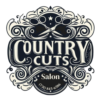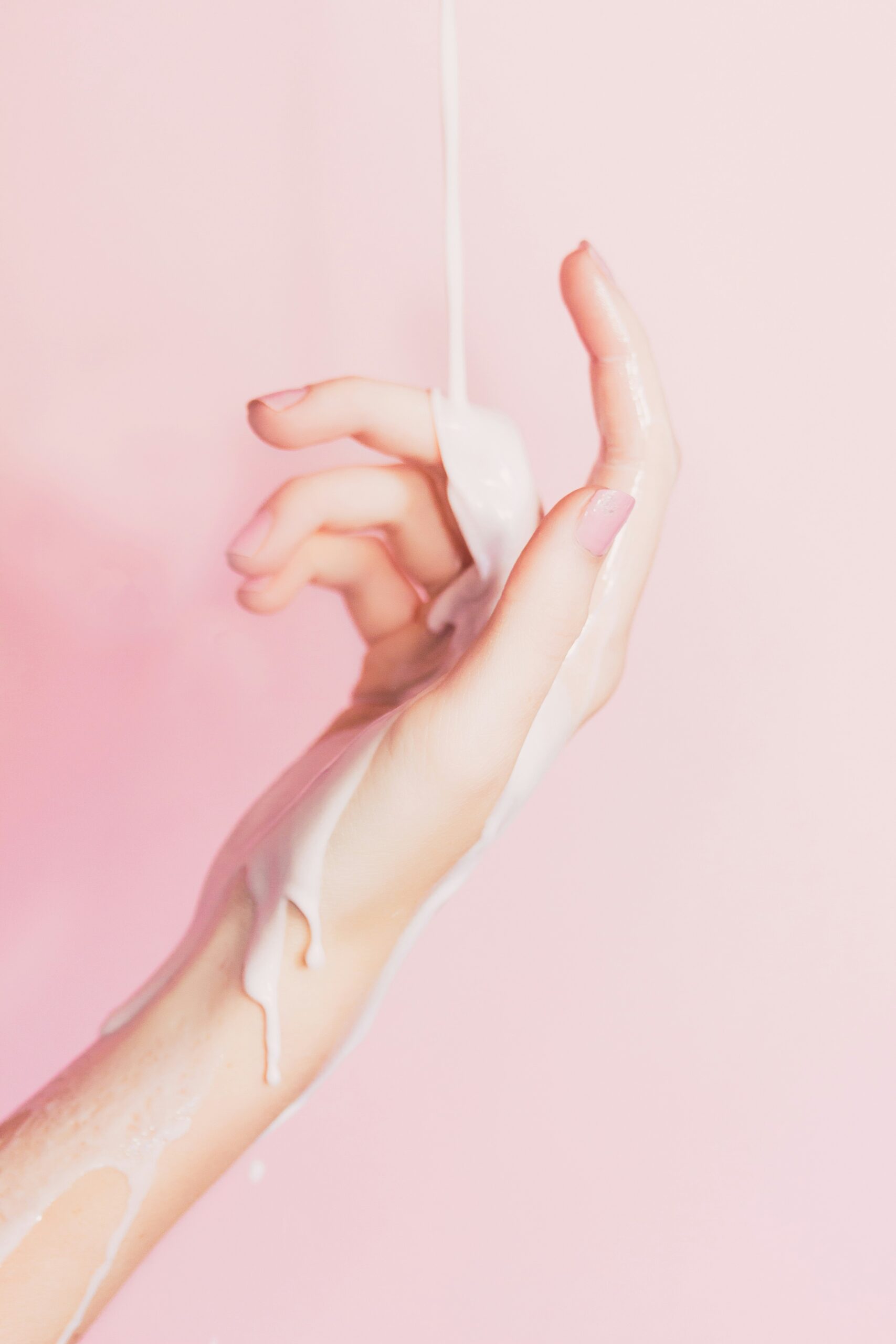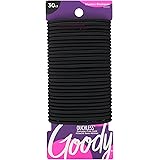Understanding Nail Biting
Nail biting, clinically referred to as onychophagia, is a habit that entails the compulsive gnawing or biting of one’s nails, often leading to noticeable damage. This behavior can vary from occasional nibbling to more severe forms where significant portions of the nail are affected. It is recognized as a common habit, but in certain instances, it may transition into a behavioral disorder, particularly when it results in impairment or distress in a person’s life.
From a psychological perspective, nail biting is often associated with anxiety and stress. Individuals may resort to this behavior as a coping mechanism during periods of tension or unease. It serves as a form of self-soothing; however, over time, it can become a compulsive act that individuals find difficult to control. This difficulty in curtailing the habit has led to its classification as a body-focused repetitive behavior (BFRB), which encompasses a range of similar disorders including hair pulling and skin picking.
The prevalence of nail biting is striking, with research indicating that approximately 20 to 30 percent of children engage in this behavior, while about 10 to 15 percent of adults continue to bite their nails into adulthood. Demographic studies suggest that nail biting is more common among males than females and may occur more frequently in individuals with family histories of the behavior. Additionally, nail biting may be influenced by environmental factors such as stressful life events or other situations that provoke anxiety.
Understanding the complexities underlying nail biting is essential for addressing the habit effectively. Recognizing its potential links to emotional distress can help individuals seek appropriate interventions and support to break the cycle of onychophagia.
The Psychology Behind Nail Biting
Nail biting, known medically as onychophagia, is often regarded as a behavioral condition that stems from various psychological triggers. Understanding these triggers provides insights into why individuals may develop this habit over time. Primarily, stress and anxiety are key contributors, as individuals may resort to nail biting as a way to cope with heightened nervousness or pressure. This compulsive behavior serves as a temporary distraction, allowing the mind to divert focus from anxiety-inducing situations. When faced with overwhelming tasks or challenging environments, the act of biting nails can provide a fleeting sense of relief.
Boredom is another significant factor leading to nail biting. In situations where an individual feels unengaged or lacks mental stimulation, they may resort to this habit as a means of self-soothing or passing the time. The repetitive motion involved in nail biting can create a sense of comfort and distraction, filling an otherwise idle moment with a familiar behavior. Additionally, perfectionism can exacerbate nail biting tendencies. Perfectionists often experience persistent feelings of inadequacy and anxiety when faced with tasks that do not meet their high standards. Consequently, this pressure can manifest as nail biting, resulting in a cycle where the individual seeks to manage their anxiety but ultimately perpetuates the habit.
Over time, these factors intertwine, creating a habitual pattern that can be difficult to break. As individuals continue to bite their nails in response to these psychological triggers, the behavior may become ingrained, leading to a cycle of habit-forming behavior driven by underlying emotional states. Recognizing these connections can be crucial in addressing nail biting, as understanding the root cause can aid in the development of effective strategies to manage and ultimately break the habit.
Health Risks Associated with Nail Biting
Nail biting, a common habit known as onychophagia, can pose significant health risks that often go unnoticed by individuals who engage in this behavior. One of the most immediate concerns is the potential for infections. The act of biting nails not only exposes the fingertips to bacteria and germs, but it also can create small tears in the skin around the nails, allowing harmful pathogens to enter the body. This can lead to various infections, including paronychia, which is an infection of the skin surrounding the nails. Symptoms may include redness, swelling, and pus formation, necessitating medical attention.
In addition to infections, nail biting can lead to dental problems. The habit can cause damage to the teeth and gums, contributing to misalignment and increasing the risk of dental caries. Regular biting may wear down enamel or even chip teeth, leading to discomfort and requiring dental interventions. Individuals may also experience an increased frequency of jaw-related issues known as bruxism, which can exacerbate oral health problems.
Moreover, skin damage around the nails is another concern linked to this habit. Continuous biting can result in painful hangnails and worsened skin health, often leading to scarring or dermatitis. The skin can become sensitive, swollen, or even discolored, causing individuals not only physical discomfort but also potential embarrassment regarding their appearance.
Given these health concerns, it is imperative for individuals who engage in nail biting to understand the importance of breaking this habit. By quitting nail biting, one can significantly improve their overall health and well-being, reducing the risk of infections, dental issues, and skin damage. Establishing healthier coping mechanisms can lead to long-term benefits that transcend beyond mere appearances.
Identifying Personal Triggers
Nail biting is a complex behavior that can often be traced back to personal triggers, which may vary significantly from one individual to another. To effectively break the habit, it is essential to identify these triggers through self-reflection techniques. Individuals can start this process by maintaining a habit journal. This journal should document nail biting instances, noting the specific contexts, emotions, and thoughts associated with each occurrence.
When you experience the urge to bite your nails, take a moment to pause and reflect on the situation. Are you feeling anxious, bored, or stressed? Understanding your emotional response can provide invaluable insight into your nail biting triggers. It may help to categorize these feelings, whether they are linked to external stressors, such as work pressures or personal relationships, or internal states, such as feelings of inadequacy or restlessness.
Additionally, consider the environments where nail biting tends to occur. Are there specific locations, like in front of a television, at work, or during social interactions, that prompt this behavior? By analyzing these patterns, you can begin to identify specific triggers that initiate nail biting episodes. Keeping a detailed record will enable you to recognize trends and establish connections between your emotional state and the habit.
Once you understand your unique triggers, you can develop strategies to address them proactively. For instance, if you notice that stress is a leading trigger, exploring relaxation techniques, such as deep breathing exercises or mindfulness practices, can be beneficial. The key is to cultivate awareness around your behavior and emotions, ultimately allowing you to manage the urge to bite your nails more effectively. By identifying personal triggers, you lay the groundwork for breaking the habit of nail biting.
Setting Achievable Goals
When attempting to break the habit of nail biting, setting realistic and achievable goals is of utmost importance. An effective approach begins with identifying specific objectives that cater to one’s personal circumstances and motivations. The practice of self-reflection can help in acknowledging the triggers for nail biting, such as stress or boredom, allowing for targeted strategies to address these underlying issues.
An essential aspect of goal-setting is the use of the SMART criteria, which stands for Specific, Measurable, Achievable, Relevant, and Time-bound. By setting specific goals, such as “I will reduce my nail biting from every day to three times a week within the next month,” individuals create a clear target to strive towards. This aims to make the quitting journey more manageable and structured.
Measurability is another crucial component. Keeping a diary that tracks nail-biting occurrences can be invaluable. This practice not only helps to monitor progress but also raises awareness about one’s habits. With measurable goals, individuals can recognize improvements, no matter how small, lending a sense of achievement that can be motivating and encouraging.
Moreover, goals should be achievable; setting a target that is too ambitious may lead to frustration and setbacks. Instead, it is beneficial to break larger goals into smaller, incremental steps. For instance, starting with a commitment to avoid nail biting in specific situations can pave the way to broader objectives.
Ultimately, relevant goals align with a person’s values and circumstances. These individualized goals should be time-bound, providing a deadline for achieving the set objectives. This timeframe not only creates urgency but also assists in maintaining focus. By adhering to these strategies, individuals can substantially increase their chances of successfully breaking the nail-biting habit.
Mindfulness and Nail Biting
Nail biting, also known as onychophagia, often serves as an automatic response to stress, anxiety, or boredom. One effective approach to addressing this habit is through the practice of mindfulness. By cultivating greater awareness of one’s thoughts and feelings, individuals can develop a deeper understanding of the triggers that lead to nail biting. Mindfulness encourages individuals to observe their impulses without judgment, which can be integral in breaking the cycle of this habit.
Implementing mindfulness can involve various exercises aimed at enhancing self-awareness. One such exercise is the practice of body scanning. This technique involves systematically focusing on different parts of the body to identify any tension or urge to bite nails, enabling individuals to connect physical sensations with emotional states. Engaging in deep breathing exercises is another valuable tool; participants can take slow, deliberate breaths while reflecting on their feelings related to nail biting. This practice not only promotes relaxation but also creates the mental space needed to choose healthier responses.
Journaling can also play a crucial role in the journey to break the nail biting habit. By writing down thoughts and experiences related to nail biting, individuals can identify patterns and specific triggers over time. This reflection can stimulate mindfulness and help in developing personalized coping strategies. Moreover, incorporating mindful distractions—such as squeezing a stress ball or fidgeting with a pen—can redirect focus away from biting nails during stressful moments.
Overall, mindfulness fosters a non-reactive awareness that can significantly aid in breaking the nail biting pattern. By recognizing and understanding the emotional underpinnings of this behavior, individuals can cultivate healthier coping mechanisms and achieve greater control over their actions. Implementing these mindfulness practices is a proactive step toward addressing and ultimately overcoming nail biting.
Substituting with Healthier Habits
Nail biting can often be a subconscious response to stress, anxiety, or boredom, leading many individuals to seek effective strategies for breaking the habit. An effective approach to overcoming this tendency is to substitute nail biting with healthier habits. Engaging in alternative activities not only helps redirect energy but also provides constructive outlets for stress relief. One of the most recommended substitutes are stress balls. These small, handheld devices can be squeezed to release tension, providing an immediate and satisfying feeling akin to nail biting without the negative consequences. By incorporating stress balls into daily routines, individuals can find a way to manage stress more effectively, replacing an undesirable habit with a productive outlet.
Fidget toys also emerge as effective alternatives for those looking to break the nail biting cycle. These tactile toys come in various forms, such as spinners, cubes, or putties, allowing individuals to keep their hands busy while keeping their minds engaged. The repetitive motions involved in using fidget toys can serve as a calming mechanism, minimizing the urge to bite nails. Moreover, hand exercises represent another beneficial substitute. Simple stretching or squeezing exercises can strengthen the hands, enhance dexterity, and shift focus away from nails. These hand exercises can be seamlessly integrated into daily routines, helping integrate healthy habits into one’s lifestyle.
Incorporating these healthier habits can enable individuals to achieve a mindful approach to managing their behaviors. By actively choosing to engage in stress balls, fidget toys, or hand exercises instead of nail biting, individuals can reclaim control over their habits. This positive redirection of energy not only diminishes the urge to bite nails but also contributes to overall well-being, creating a more fulfilling and health-conscious lifestyle.
The Role of Family and Friends
When seeking to break the habit of nail biting, the involvement of family and friends can enhance motivation and create a supportive environment conducive to change. Engaging loved ones in the effort to address this behavioral concern can provide the necessary accountability and encouragement that often make a significant difference. This section explores effective strategies to enlist their support in overcoming this common habit.
Open communication is vital to engendering a supportive atmosphere. It is essential to express your desire to quit nail biting clearly and honestly to those close to you. By articulating your intentions and the reasons behind your goal, friends and family members can better understand the gravity of your commitment. This dialogue not only fosters empathy but also increases the likelihood that they will be willing to assist you on your journey.
Encouragement can take many forms; simply asking friends and family to remind you when they notice you engaging in nail biting can be helpful. This gentle nudging can serve as an external prompt, drawing attention to the behavior and prompting you to cease it. Additionally, you may consider leveraging social situations to cultivate a collective approach. For instance, establishing a friendly competition among family members, such as a challenge to see who can go the longest without nail biting, can infuse an element of fun and urgency into the process.
Furthermore, positive reinforcement can greatly influence your progress. Celebrate milestones, whether they are small or significant, with the support of loved ones. These acknowledgments not only bolster your sense of achievement but also fortify the collective commitment to help one another avoid unhealthy behaviors. By capitalizing on the influence of family and friends, you can establish a solid support network that encourages perseverance and resilience in overcoming nail biting.
Professional Help and Therapy
Nail biting, clinically known as onychophagia, is often viewed merely as a habit; however, it can sometimes be a manifestation of deeper psychological issues. Individuals who find themselves unable to control their nail-biting, despite attempts to stop, may benefit from seeking professional help. It is essential to recognize when this behavior is more than just a physical act and might require intervention from mental health professionals.
Therapy options for nail biting vary, but cognitive-behavioral therapy (CBT) is one of the most effective methods. CBT focuses on identifying the underlying thoughts and feelings that contribute to the nail-biting habit. By addressing these cognitive patterns, individuals can develop healthier coping mechanisms to manage stress or anxiety, which are often triggers for nail biting. In a supportive therapeutic environment, clients have the opportunity to explore their motivations and establish actionable strategies to discontinue the habit.
Another approach is habit reversal training, which is a specific technique within behavioral therapy. This method involves increasing awareness of the nail-biting behavior and substituting it with a less harmful alternative. Through consistent practice and commitment, individuals can learn to replace nail biting with tasks that are constructive, such as using stress balls or engaging in other forms of hand activity whenever the urge arises.
Moreover, some individuals may benefit from counseling focused on the emotional and psychological aspects associated with their nail biting. This could involve exploring anxiety management techniques or discussing emotional triggers in a safe environment. Also, engaging with support groups offers shared experiences and collective strategies, encouraging accountability and motivation among individuals striving to break free from the habit.
In summary, if nail biting becomes a distressing issue impacting daily life, professional assistance can provide tailored strategies for recovery. Recognizing the need for help and utilizing therapeutic resources can be pivotal in overcoming the habit effectively.
Using Bitter Nail Polish
Bitter nail polish has emerged as a popular solution for individuals looking to curb their nail biting habits. This method leverages the unpleasant taste of the polish to act as a deterrent against biting. When applied to the nails, the bitter flavor serves as a constant reminder of the goal to stop nail biting, effectively discouraging the behavior. The psychological aspect of tasting something unpalatable often prompts individuals to reconsider their urge to bite their nails.
The application of bitter nail polish is relatively straightforward. Users simply apply a thin coat to their nails, allowing it to dry completely. The harsh taste, when nails are bitten or fingers are brought to the mouth, almost immediately reinforces the negative behavior associated with nail biting. For many, this approach provides a necessary obstacle that disrupts the cycle of biting, gradually enabling them to overcome the habit.
Additionally, while bitter nail polish is an effective option for many, it is important to note that various other topical solutions are also available on the market. Some alternatives include nail treatments designed to promote healing of damaged nails, while others are geared toward creating a physical barrier that prevents biting. For instance, transparent strengthening treatments can aid in improving nail health while dissuading the habit, as individuals may be less inclined to bite nails that look polished and well-maintained.
Ultimately, combining the use of bitter nail polish with a comprehensive understanding of nail care can significantly enhance the odds of successfully breaking the habit. The effectiveness of such tools lies in their ability to shift the perception of nail biting from a benign action to one associated with discomfort and potential damage. This shift is critical in fostering long-term behavioral change and promoting healthier nail care habits.
Tracking Progress
Monitoring progress is crucial in the journey to overcome nail biting, as it allows individuals to recognize their advancements and remain motivated. A systematic approach to tracking improvements can reinforce commitment to breaking this habit. One effective method is to maintain a daily journal, where individuals can record their experiences, feelings, and triggers related to nail biting. By reflecting on these entries periodically, one can identify patterns—such as specific situations or emotions that precipitate the urge to bite nails—and develop strategies to avert such impulses.
Another beneficial tracking tool is the use of visual reminders. For instance, creating a calendar to mark each day without nail biting can provide a tangible representation of progress. By seeing consecutive days without engaging in the habit, individuals may feel encouraged to continue their efforts. Additionally, using apps specifically designed to track bad habits can be advantageous, as they often provide features such as reminders or milestones that can help keep individuals focused on their goal.
Celebrating small victories is also a vital aspect of tracking progress. Acknowledging milestones—whether it is one week free of nail biting or simply a day without the habit—reinforces a positive mindset. Small rewards, such as treating oneself to a favorite snack, purchasing a new item, or enjoying a day out, can greatly enhance motivation. The act of celebrating these achievements not only boosts self-esteem but also reinforces the individual’s resolve to continue their journey toward overcoming nail biting.
Incorporating these tracking methods can significantly support individuals in their quest to break the nail-biting habit. By routinely monitoring their progress and celebrating achievements, they can cultivate a stronger sense of control and motivation, leading to greater long-term success.
Understanding Relapse
Relapsing is often perceived as a failure when attempting to break a habit, such as nail biting. However, recognizing that setbacks are a natural part of the process can be instrumental in overcoming this behavior. Individuals trying to stop nail biting may find themselves reverting to the habit during stressful times or periods of anxiety. This phenomenon is not uncommon; it is crucial to acknowledge that setbacks can happen to anyone embarking on a journey toward better habits.
When a relapse occurs, it may evoke feelings of disappointment or frustration. It is essential to acknowledge these emotions without allowing them to derail progress. Instead of viewing a setback as a complete failure, treat it as an opportunity for reflection. Consider what triggered the relapse. Was it stress from work, a social situation, or boredom? Identifying these triggers enables individuals to develop strategies to counteract them in the future, ultimately leading to better management of the habit.
Resilience plays a vital role in breaking the habit of nail biting. The path to success may be riddled with obstacles, and each relapse can serve as a steppingstone rather than a stumbling block. It’s important to remember that persistence is key; returning to the commitment to stop nail biting after a setback illustrates determination and a willingness to improve. Setting realistic goals can also be beneficial. Rather than aiming for immediate perfection, understand that breaking the habit is a gradual process requiring time and effort.
Developing a support system can provide additional encouragement. Engaging friends or family in the journey can foster accountability and encouragement. Sharing experiences and challenges related to nail biting can create a supportive environment that enhances perseverance. Overall, approaching relapses with a mindset focused on learning and growth is instrumental in overcoming the habit of nail biting and establishing lasting change.
Creating an Anti-Nail Biting Environment
Breaking the habit of nail biting often begins with a thorough assessment of one’s environment. Identifying and minimizing potential triggers is essential for fostering a space conducive to maintaining healthy nails and discouraging the urge to bite. Implementing practical changes can significantly reduce the frequency of this habit.
One effective strategy is to keep the hands busy. Engaging in activities that require hand coordination can serve as a productive distraction from the compulsion to bite nails. Consider using stress balls, fidget spinners, or even crafts that involve handwork, such as knitting or drawing. This not only helps to divert attention but also engages the mind and body in a constructive manner.
Maintaining proper nail care is another critical aspect of creating an anti-nail biting environment. Regularly trimming and shaping nails can help minimize the temptation to bite. Keeping nails clean and moisturized reduces the likelihood of hangnails or rough edges, which can trigger nail-biting behavior. Additionally, applying bitter-tasting nail polish specifically designed to deter biting can act as an effective barrier that physically and tastefully discourages this habit.
Moreover, managing stressors in one’s surroundings is vital. Since nail biting can often stem from anxiety or stress, recognizing and addressing the sources of these feelings is important. Implementing calming practices such as mindfulness, meditation, or simple breathing exercises can create a more serene environment. Creating a designated ‘calm space’ in your home or workplace can provide a retreat when stressors arise, reducing the propensity to revert to nail biting as a coping mechanism.
Overall, by modifying your environment to keep hands occupied, ensuring proper nail care, and managing stress effectively, you can significantly reduce the triggers that lead to nail biting. These proactive steps pave the way for healthier habits and a more positive posture toward breaking the cycle of this behavior.
Incorporating Relaxation Techniques
One of the fundamental approaches to breaking the habit of nail biting is to integrate relaxation techniques into daily routines. These practices help to alleviate stress and anxiety, which are often underlying triggers for this habit. By implementing methods such as deep breathing, yoga, and meditation, individuals can significantly reduce the urge to engage in nail biting.
Deep breathing exercises are particularly effective as they promote a sense of calm and control. By focusing on slow, deliberate breaths, one can help to lower anxiety levels and divert attention from the impulse to bite nails. To practice, individuals can take a moment to inhale deeply through the nose, hold for a few seconds, and then exhale slowly through the mouth. Repeating this process several times can create a soothing effect, thereby diminishing the desire to bite nails.
Yoga is another beneficial technique that combines physical movement with mental focus. Regular practice helps to develop awareness of the body and its responses to stress, enabling individuals to recognize the moments when they are most likely to resort to nail biting. Poses that promote relaxation, such as Child’s Pose or Legs Up the Wall, can be particularly helpful in creating a tranquil state that counters the urge to bite nails.
Meditation, particularly mindfulness meditation, encourages individuals to observe their thoughts and feelings without judgment. This practice aids in recognizing the triggers associated with nail biting and allows for the development of healthier coping mechanisms. Even a few minutes of meditation each day can lead to significant improvements in emotional regulation, which is crucial for overcoming habitual behaviors like nail biting.
Incorporating these relaxation techniques into a daily regimen not only assists in breaking the nail biting habit but also contributes to overall well-being. By fostering a more relaxed and aware state of mind, individuals are better equipped to manage stress and decrease the likelihood of falling back into old habits.
Success Stories and Testimonials
Overcoming the habit of nail biting is a journey that many individuals can relate to. Numerous success stories demonstrate that breaking this habit is possible with determination and effective strategies. One notable case is that of Sarah, a 28-year-old graphic designer who had been biting her nails since childhood. Frustrated with her appearance, Sarah decided to take action. She began by seeking professional help. Sarah’s therapist introduced her to cognitive-behavioral techniques, which focused on understanding the triggers of her nail biting. She learned to replace the behavior with healthier habits like stress-relief exercises, which significantly contributed to her success.
Another inspiring story comes from Jake, a 20-year-old college student. Jake faced nail biting mostly due to anxiety surrounding academic pressures. His turning point came when he discovered the value of mindfulness. By regularly practicing mindfulness meditation, he became more aware of his impulses and learned to manage his anxiety. This newfound awareness allowed him to consciously divert his hands to other activities, such as drawing, which ultimately led to him quitting the habit. His journey highlights that self-awareness plays an essential role in breaking the cycle of nail biting.
In addition to therapeutic strategies, some individuals have found personal motivation in keeping their nails manicured. For example, Emily, a fashion enthusiast, began visiting a nail salon regularly. She invested in high-quality nail care products and enjoyed flaunting her polished nails as a fashion statement. This visual reminder deterred her from biting her nails. Emily’s testimonial underscores that external factors combined with internal motivation can effectively support individuals in overcoming their nail biting habits.
These real-life experiences show that breaking the cycle of nail biting is achievable through diverse strategies, whether they focus on mindfulness, professional support, or personal motivation. Readers can draw inspiration from these success stories as they embark on their own journeys to overcome this habit.
Preventing Future Relapses
Breaking the habit of nail biting is a commendable achievement, but the journey does not end with cessation. To ensure long-term success and prevent future relapses, individuals must cultivate ongoing self-awareness and employ effective strategies. The first step in preventing relapses is to maintain a heightened awareness of triggers. Keeping a detailed journal of situations, emotions, or environments that instigate the urge to bite nails can provide valuable insights into personal patterns. This reflection equips individuals with the knowledge required to address these triggers constructively.
Implementing reminder systems can also play a crucial role in sustaining progress. Simple reminders, such as placing sticky notes in prominent places or using smartphone alerts, can serve as effective prompts to resist the temptation to bite nails. Additionally, using physical barriers, like wearing gloves or nail polish with a bitter taste, can deter the behavior during high-risk periods. These strategies help reinforce commitment and nudge individuals toward mindful decision-making regarding their habits.
Continuous support from friends, family, or support groups is essential in the journey of overcoming nail biting. Sharing personal goals with others can hold individuals accountable, while also providing encouragement during challenging times. Engaging in discussions with a therapist or counselor may also be beneficial, offering an opportunity to explore underlying emotional issues associated with the habit. Together, these tools foster an environment conducive to maintaining nail health and reducing the likelihood of relapse.
In conclusion, successfully quitting nail biting requires dedication and ongoing effort. By fostering self-awareness, utilizing reminder systems, and seeking continuous support, individuals can not only break free from this habit but also build resilience against future challenges. Through these approaches, they can maintain healthier nails and improved emotional well-being.
Benefits of Quitting Nail Biting
Breaking the habit of nail biting can yield a multitude of significant benefits that enhance both physical health and mental well-being. Firstly, improved physical health is one of the most notable advantages. Nail biting can lead to various health issues, including infections, damaged skin around the nails, and even dental problems. By quitting this habit, individuals significantly reduce the risk of these ailments, allowing their hands and nails to heal and look healthier. Clear, well-groomed nails project an image of health, which can foster a more positive self-image.
Another benefit of overcoming nail biting is an increase in self-confidence. Many individuals who bite their nails often feel embarrassed or self-conscious about the state of their hands. This embarrassment can impact interactions in social or professional settings. Eliminating the habit not only enhances the appearance of the nails but also allows individuals to feel more at ease when using their hands in public. This newfound confidence can extend into other areas of life, fostering a more positive attitude and greater self-acceptance.
Moreover, breaking the cycle of nail biting can have profound effects on mental well-being. Nail biting is often a response to stress or anxiety; thus, conquering this habit can lead to a reduction in these negative emotions. The process of finding alternative coping mechanisms can provide a more constructive outlet for dealing with stress, allowing individuals to better manage their emotional health. The sense of accomplishment gained from overcoming this habit serves as a powerful motivator, reinforcing a positive mindset that can benefit various aspects of life.
In summary, the benefits of quitting nail biting are far-reaching, enhancing physical health, boosting self-confidence, and promoting mental well-being. By focusing on these positive outcomes, individuals can remain motivated on their journey to break free from this habit.
Resources for Support and Information
When seeking to understand and combat the habit of nail biting, a variety of resources are available to provide support and information. Whether you are looking for educational materials, community support, or practical strategies to help break this habit, the following options can be particularly beneficial.
First, online platforms such as PubMed and Psychology Today offer access to research articles and expert insights into the psychological underpinnings of nail biting and its treatment approaches. These sites can help individuals grasp the complex nature of this behavioral condition, offering helpful insights for those attempting to break the cycle.
Books can also serve as a vital resource. Titles like “The Nail Biting Cure” by Dr. Michael E. Bader and “Stop Biting Your Nails” by Dr. Claudia G. M. Berner provide insight into effective strategies aimed at understanding and overcoming the habit. These books often integrate techniques from cognitive-behavioral therapy, making them excellent tools for readers looking to adopt new methods for improving their habits.
Support groups, both online and in-person, can create a sense of community for those attempting to overcome nail biting. Websites like 7 Cups connect individuals with trained listeners and communities where they can share their experiences, receive encouragement, and gather practical tips. Additionally, local mental health organizations may host support groups or workshops focused on behavioral issues, including nail biting.
In conclusion, combining literature, online resources, and community support forms a well-rounded strategy for those looking to conquer nail biting. Utilizing these tools can significantly enhance one’s journey towards breaking this habit.
Conclusion: Taking the First Step
Overcoming the habit of nail biting can indeed be challenging, yet it is a journey that begins with a single step. The importance of committing to this process cannot be overstated; it serves as the foundation for effective behavioral change. Many individuals have successfully altered their habits and significantly improved both their nail health and personal confidence. With effort and dedication, change is entirely attainable.
As you embark on this journey, it is crucial to acknowledge that setbacks may occur. However, these setbacks shouldn’t deter you from your ultimate goal. Instead, viewing them as opportunities for reflection will help solidify your resolve to break free from this habit. To aid in this transformation, consider the various strategies discussed previously, such as identifying triggers, employing alternative coping mechanisms, and seeking support from friends or professionals.
Investing time in understanding your habit is paramount to finding effective solutions. Tracking your progress can not only serve as motivation but also provide a clearer insight into your behavioral patterns. Celebrate small victories along the way; recognizing personal milestones can further reinforce your dedication to breaking the habit of nail biting.
In conclusion, the journey to overcoming nail biting is not just about changing a behavior but also about fostering a healthier self-image. Each effort you invest to change this habit contributes to your overall well-being and self-esteem. With a commitment to the process and the willingness to embrace change, there is no doubt that success is within reach. Start today by taking that first step; your future self will thank you.






